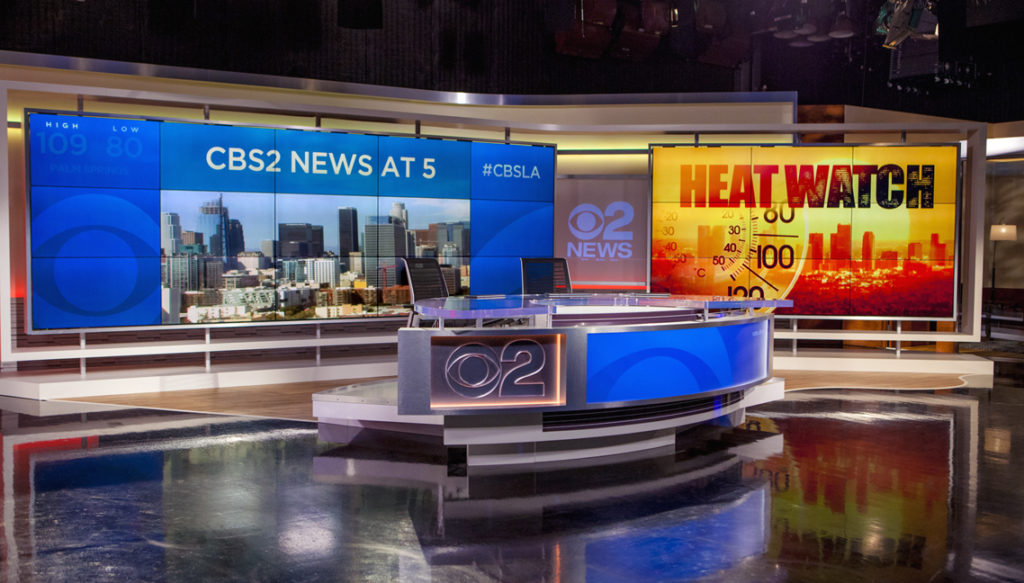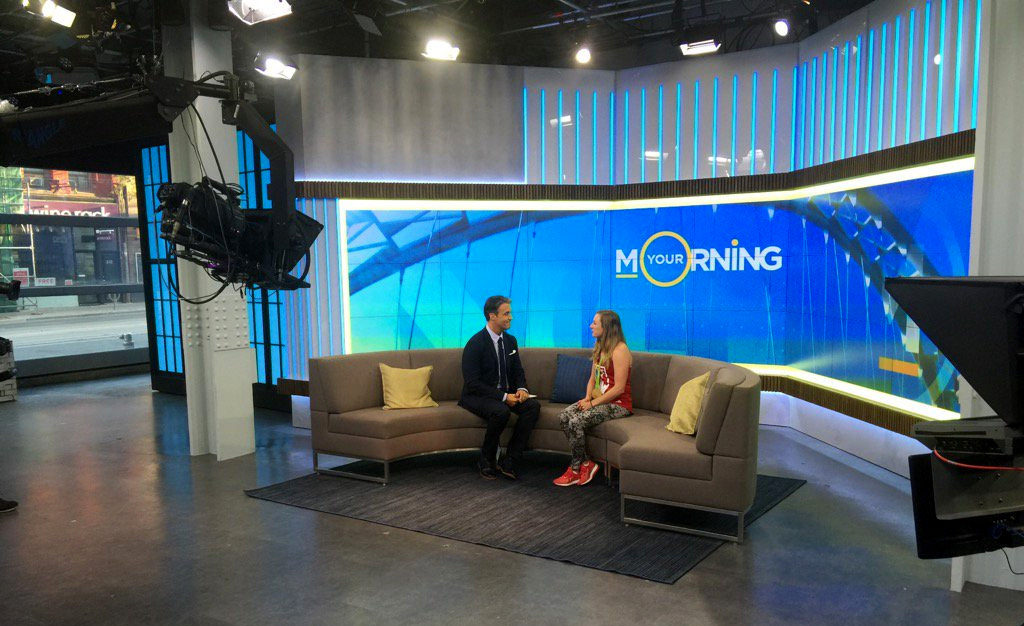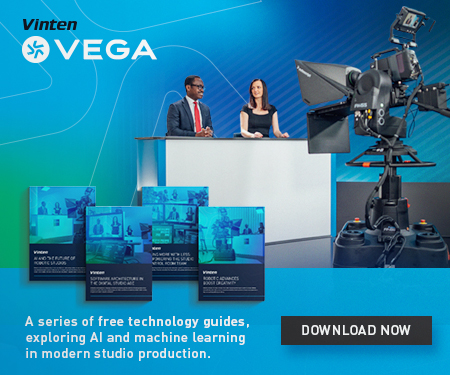Industry Insights: Studio display technology roundtable

Subscribe to NewscastStudio for the latest news, project case studies and product announcements in broadcast technology, creative design and engineering delivered to your inbox.
“It’s not a matter of which technology option is better, it’s more important to answer which technology is appropriate for the desired experience within the budget allowed. Both options have had advantages over the years,” said Durant. “LED was more scalable, flexible and ‘bezel less’ than LCD, but with the latest reduction in LCD bezel sizes and now being offered in bendable models those differences have become much smaller. On the other side LCD has almost always had a price advantage over LED, but over the years the LED prices have been reducing and have become much closer to the LCD price points.”
[quote]”If a client can afford LED, it looks incredible.”[/quote]
“Plasma has some unique properties on camera but it is very hard to find in the supply chain. Advanced has purchased a large inventory of new Plasma video wall panels as we believe clients who continue to demand this technology will be looking for a partner with inventory,” added Weatherhead. “Personally, I prefer the look of Plasma over LCD video walls in studio environments. Our recent project a few months ago for BellMedia Your Morning is a great example of this.”
“I have seen flat panel displays last for 7-8 years and I have seen flat panel displays last for 1 year. If you stick with a commercial display you will get at least a 3 year warranty with advanced replacement warranty AND the form factor will remain identical to what you have,” said Landy.
“The initial hard obstacle for local broadcasters to have LED as a viable option ‘price’ has been almost eliminated depending on the desired design. In the end it will boil down to design desired vs the total price to implement, not which one is necessarily better,” added Durant.
Number one piece of advice when considering studio technology?
“Understand your limitations and strengths, including but limited to: lighting grid, viewing distances, real processing costs and overall budget constraints. Otherwise, limitless,” said Averbuch.
“Camera tests in your studio environment are very important, particularly for a large investment such as LED technology,” said Weatherhead. “You need to be confident that the manufacturer’s product is up to the challenge. This can’t simply be achieved by comparing ‘specs’; a customer must compare and see how the technology performs in their specific environment.”
“Utilize experienced design consulting to assist you in matching up the technology to the experience desired. Set designers working with AV technology experts who do this on a daily basis should always be consulted. Their experience will help you understand what will or will not work within your studio,” said Durant. “Sometimes end users get drawn into the use of the newest technologies which look exciting at first, but after further study and experience the initial wow or uniqueness quickly wears off and you are left with trying to force its use into a solution which never truly materializes. If the technology was purchased, usually at a premium cost, you are either left with a hole in your budget with nothing to show for it or you are forced into allocating more funds into correcting/replacing the solution. Or just as bad, you have one studio with so many different technologies, you get visual overload with no real focal point or look, and end up with a numbing result instead of the impact to the viewer being sought.”
“We encourage customers to learn what other respected studios are doing to learn from their best practices,” said Davis. “Although the technology is progressing quickly, proven technology from a market leader can give customers a degree of confidence in their purchase decisions that is worth its weight in gold when it counts.”

KCBS in Los Angeles from Broadcast Design International
“The #1 tip is to choose commercial grade display technology and not be fooled into using consumer grade LCD panels if that is what the budget will allow,” said Landy. “When you choose consumer grade equipment you will first void the manufacturer’s warranty, will not have the digital loop-through capability to create a display wall if required and will have one hell of a time color balancing consumer grade displays to one another. Then comes the big one, 1 year after you install consumer grade displays and one display no longer functions you will not be able to find that same display again because that model has been discontinued, changed model number and the form factor is ALWAYS different from the previous model.”
“With the technology curve being less than 3 years at this time leasing rather than purchasing under a capital improvement budget makes more and more sense. Any technology you choose will be better 3 years from the date you installed it, with most broadcasters wanting to update their sets once every 5 years or so it becomes more and more attractive to consider a 60 month lease of the display technology and pay for it over 5 years rather than come up short with the capital expense budget and settle for something less than your first choice of display technology,” added Landy.
Participants
Chanan S. Averbuch – Primeview
Jennifer Davis – Leyard
James Durant – AV Design Services
Jim Landy – AV Design Services
David Weatherhead – Advanced
Stay tuned next week for our second Industry Insights panel, discussing video wall controllers and related hardware/software solutions includign Avid, Vizrt, Barco and others.
[focus-on]This article is part of our Focus On Studio Technology, presented by AV Design Services. View more from the series here.[/focus-on]
Subscribe to NewscastStudio for the latest news, project case studies and product announcements in broadcast technology, creative design and engineering delivered to your inbox.




tags
Advanced, APG, APG Displays, AV Design Services, Chanan S. Averbuch, David Weatherhead, industry, James Durant, jennifer davis, jim landy, LED, LED Tiles, monitor wall, Planar, Primeview, studio display, trends, video display, video wall
categories
Broadcast Design, Broadcast Facility, Exclusives, Heroes, Industry Insights, Studio Technology, TV Set Design